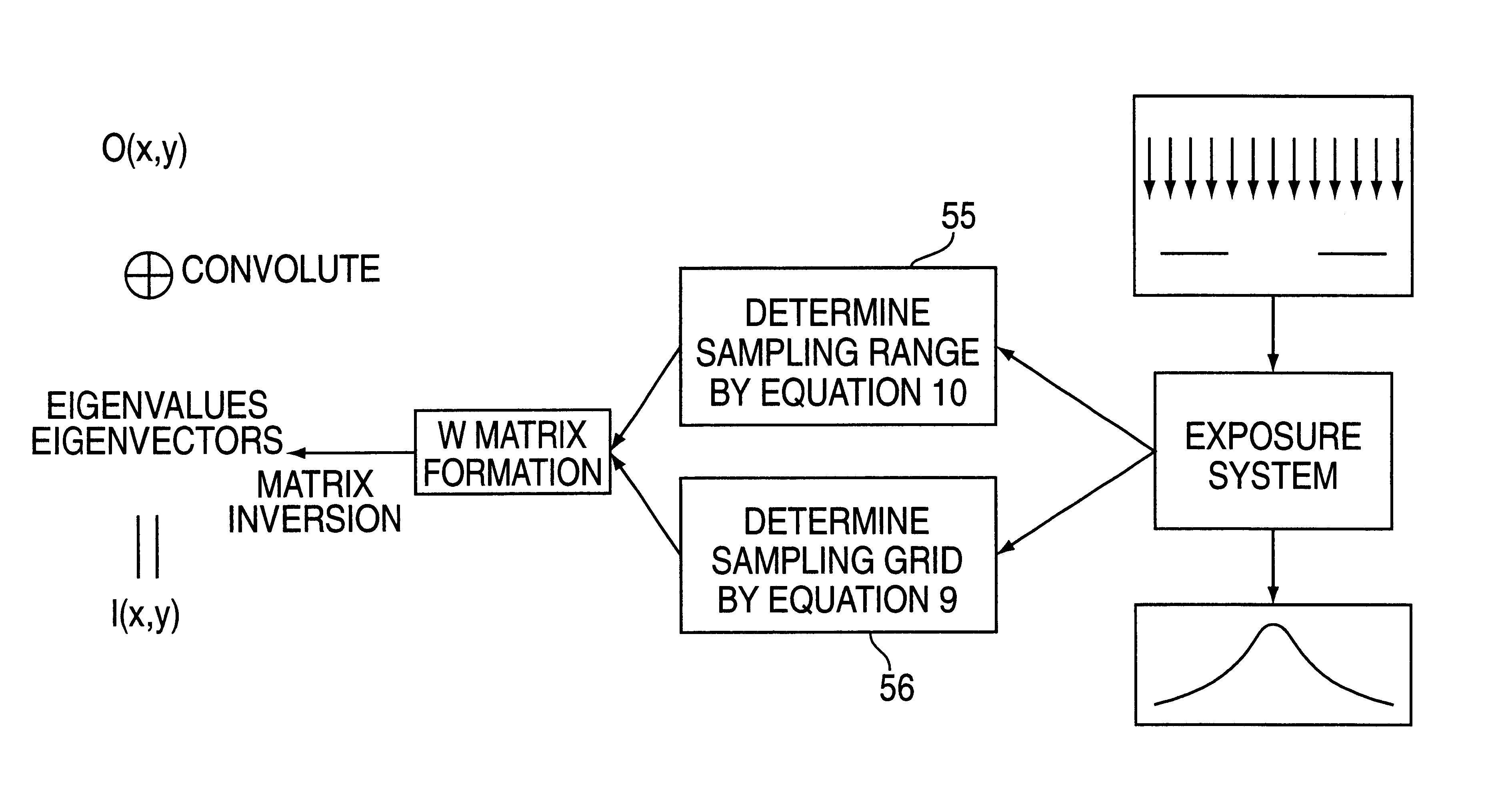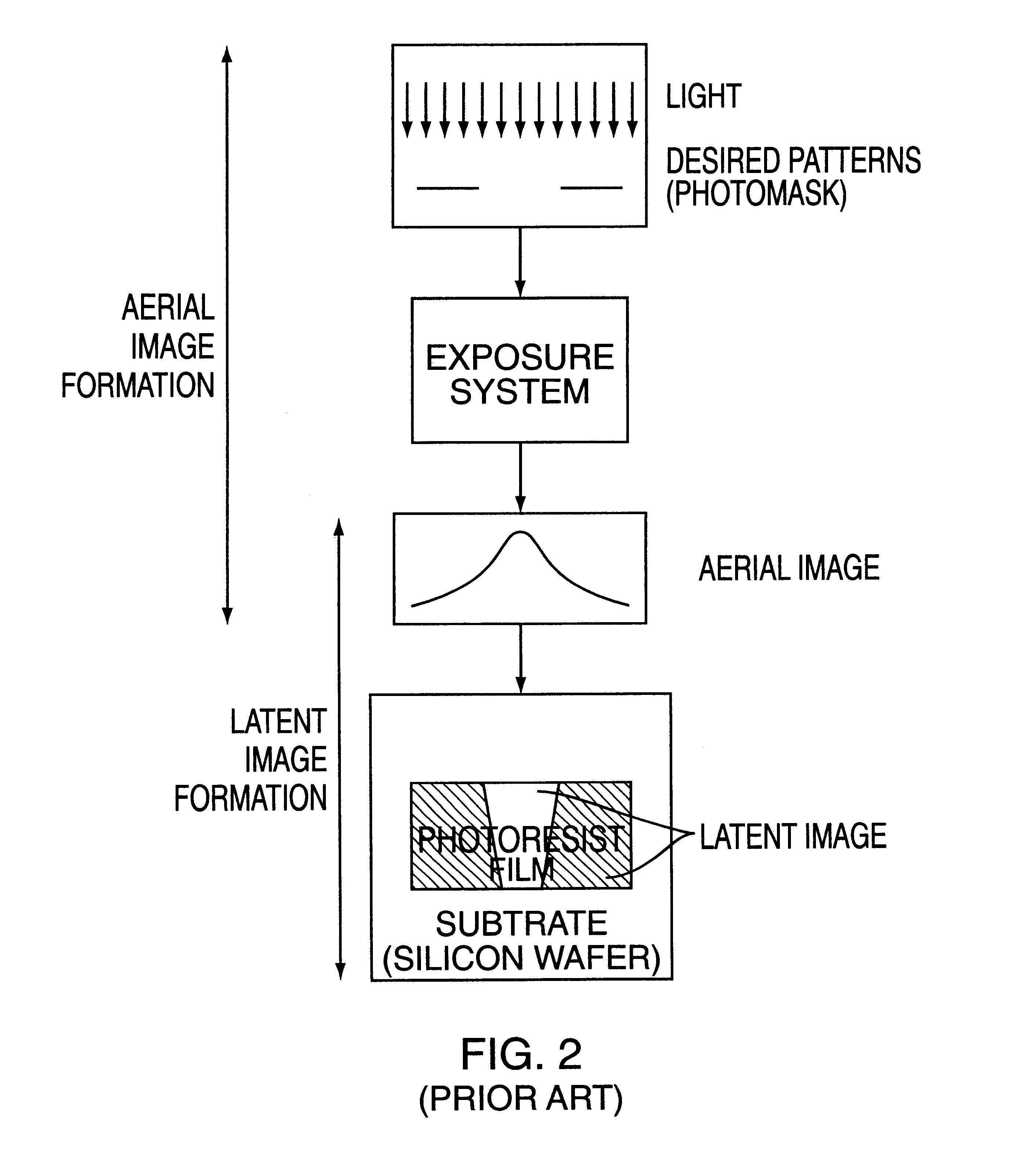Kernel-based fast aerial image computation for a large scale design of integrated circuit patterns
a large-scale design and image computation technology, applied in the field of aerial images for photolithographic simulation, can solve the problems of inability to compute images of large masks in a reasonable amount of time, large size of data representing typical ic patterns, and high computational intensity of all
- Summary
- Abstract
- Description
- Claims
- Application Information
AI Technical Summary
Benefits of technology
Problems solved by technology
Method used
Image
Examples
Embodiment Construction
Theory of Aerial Image Formation
Aerial image formation can be described by the following basic equation 1: ##EQU1##
with i=-1, denoting complex conjugation, (x', y') and (.alpha.', .beta.', .gamma.') representing, respectively, the image plane coordinates and directional cosines of the exit pupil, assuming that the optic axis is aligned with the z-axis and light propagates in the +z direction. Essentially, J(x,y) represents the light source of the exposure system, Po.sub.(x,y) describes the imaging of the exposure system, and Po.sub.(x,y) the function of the photomask patterns.
Aerial Image Calculation via Transmission Cross-coefficients (TCC)
For computation sake, equation 1 can be expressed by substituting equation 3 into equation 1. After some Mathematical manipulation, the following equation 4 results: ##EQU2##
are called the transmission cross-coefficients (TCCs).
are referred to as transmission cross-coefficients (see Principles of Oitics, section 10.5, pp. 528-532, by M. Born et a...
PUM
 Login to View More
Login to View More Abstract
Description
Claims
Application Information
 Login to View More
Login to View More - R&D
- Intellectual Property
- Life Sciences
- Materials
- Tech Scout
- Unparalleled Data Quality
- Higher Quality Content
- 60% Fewer Hallucinations
Browse by: Latest US Patents, China's latest patents, Technical Efficacy Thesaurus, Application Domain, Technology Topic, Popular Technical Reports.
© 2025 PatSnap. All rights reserved.Legal|Privacy policy|Modern Slavery Act Transparency Statement|Sitemap|About US| Contact US: help@patsnap.com



